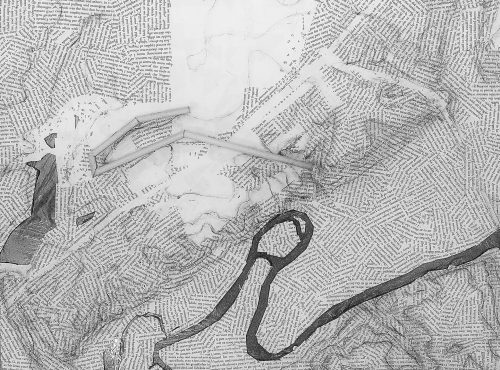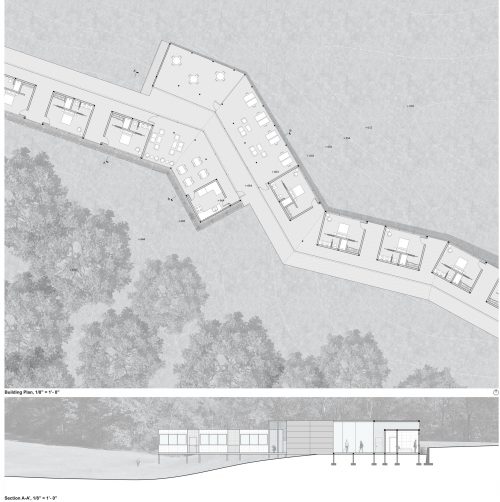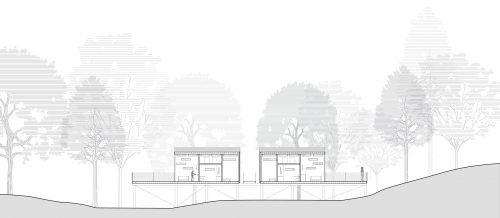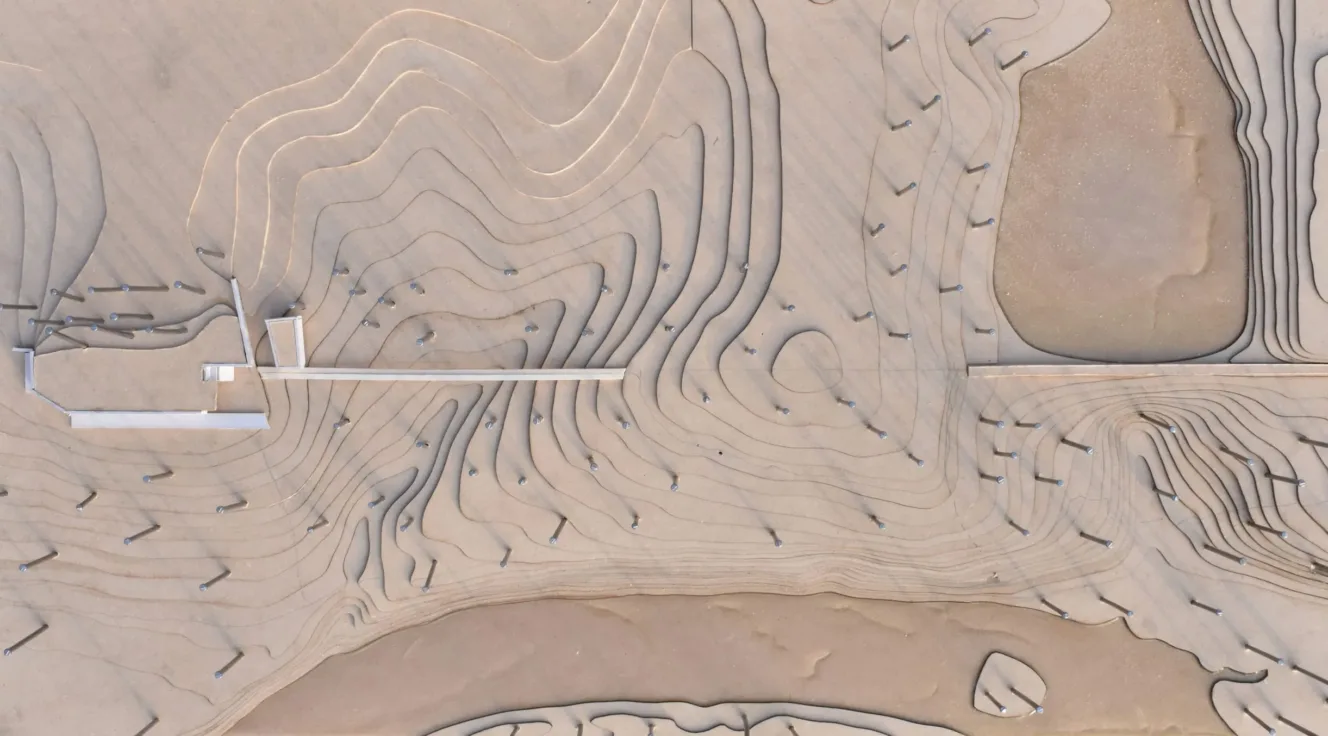ARCH 373: Architectural Design and the Landscape
Sara Bartumeus Ferre and Christina Bollo (Coordinators), Aneesha Dharwadker, David Emmons, Claire Gaspin, Christian Pepper, Hugh Swiatek, Fall 2018
This studio focuses on building in a landscape setting and the creation of place. We interpret the term “landscape” to mean not only the physical land of a site, but also the various natural systems (plants, animals, climate) with which architecture may interact. Therefore, the course deals with a very important aspect of architectural design: how design can enable meaningful interactions between people and the natural environment.
Every structure introduced into a natural setting has an impact on its environment. To dwell in the landscape, the act of building, alters the existing ecosystem. Because of the unique nature of a setting, architecture should be sensitive to its environment. The course will introduce students to basic techniques to read the variable and invariable qualities of the landscape to be inhabited –structure, patterns, texture, materiality, color, light, visibility, etc.- the physical and perceived characteristics that can influence design choices and inform architecture. This sensitivity towards the landscape and site conditions -orientation, topography, soils, vegetation, climate, vistas, etc.- may express itself in the building’s form, material choices and/or structure, in the way the building meets the ground and/or the way interior and exterior spaces relate. The students will reflect on and enhance the landscape identity of the place when designing, focusing on the relationship between architecture and place, designing a building and its immediate open space simultaneously.

Sabas Padilla

Laura McHugh

Campbell Kraemer

Campbell Kraemer

Genevieve Jones

David Bell

Curtis Howard

Bianca Deng
